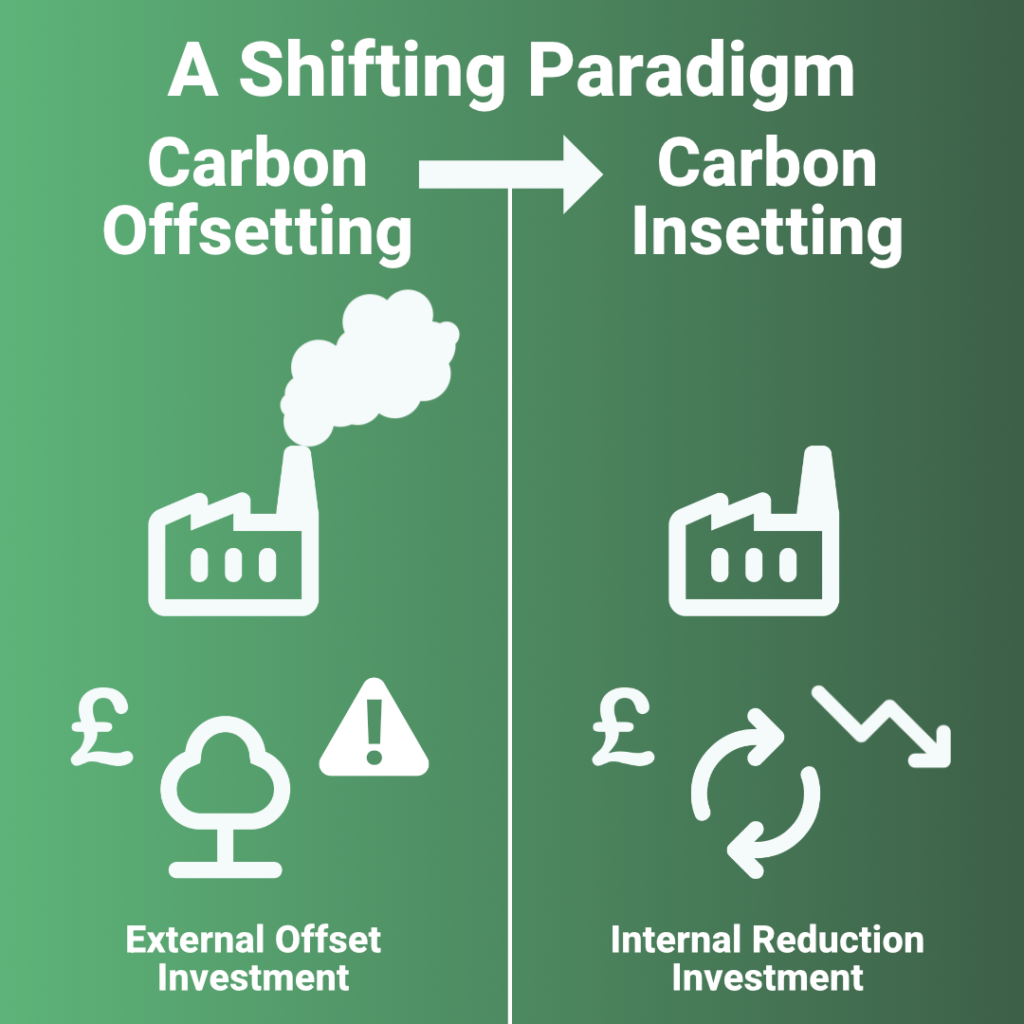As we confront the stark reality of climate change, with escalating extreme weather incidents and rising sea levels, it has become imperative to take immediate action. The focus must now shift from carbon offsetting to carbon reduction or ‘insetting.’ This article delves into the controversies surrounding carbon offsetting, differentiates it from carbon reduction, and discusses the future of carbon management.
Carbon Offsetting under Scrutiny
Historically, carbon offsetting has been viewed as a viable measure for businesses to balance out their greenhouse gas emissions. A company with a substantial carbon footprint could ‘purchase’ carbon credits from projects aimed at reducing, avoiding or sequestering emissions, thereby creating a net-zero carbon emission balance. These projects span a variety of initiatives, ranging from forest conservation to energy optimisation, with tree planting and forest protection being notably popular.
However, this $300m USD market has recently come under fire. This was triggered by a supposed scandal involving Verra, one of the world-leading verified carbon creditors. It was suggested that some forest carbon credits, utilised to offset emissions, were grossly exaggerated, if not entirely falsified (LSE, 2023; The Guardian, 2023). Verra has subsequently published a fierce response defending their methodologies and overall credibility (Verra, 2023). The possible unreliability of forest credits for offsetting emissions could exacerbate the issue of potentially hollow ‘net-zero’ pledges from corporations, a practice otherwise described as “greenwashing”.
The situation is further complicated by the existence of both regulatory Carbon Market (RCM) and Voluntary Carbon Market (VCM). In regulatory markets such as the EU Emissions Trading Scheme (ETS), companies must purchase offsets or risk exceeding their allotted emission caps. Voluntary markets, on the other hand, allow entities to offset emissions from activities like transportation or electricity use (Ecosystem Marketplace, 2018).
Unpacking Carbon Reduction
In contrast to carbon offsetting, carbon reduction or ‘insetting’ refers to an entity’s direct efforts to diminish its carbon footprint. It involves strategies like reducing transport emissions, adopting a circular economy, conducting life-cycle analyses, adhering to Extended Producer Responsibility (EPR), and executing net-zero policies (SaveMoneyCutCarbon, 2023).
A significant component of carbon reduction is compliance with mandatory greenhouse gas (GHG) reporting rules such as the EU and UK Emissions Trading System (ETS), Energy Saving Opportunity Scheme (ESOS), and Climate Change Agreements (CCA) Scheme. These regulations mandate new annual disclosures for large, unquoted organisations, thereby extending the reporting requirements.
The Road Ahead for Carbon Management
Given the explosive article published by the Guardian and the potential for carbon offsetting to be leveraged for ‘greenwashing’ emissions, it’s clear that carbon reduction presents a more stringent and effective approach to addressing climate change. It’s also more resilient to scrutiny and offers a clearer pathway to real, tangible change.
The Integrity Council for the Voluntary Carbon Market (ICVCM) is taking steps towards more transparent and accountable carbon offsetting. Their proposed core carbon principles aim to ensure all projects have robust methodologies and are resistant to ‘leakages’ or other miscounting errors, as well as respecting human rights, including those of Indigenous Peoples, and that the benefits to local communities are visible to market participants (ICVCM, 2023).
However, these measures alone are not sufficient. Companies need to transition away from relying on carbon offsetting as their primary means of achieving net-zero emissions. Instead, a greater emphasis should be placed on carbon reduction within their sustainability strategies.
By embracing carbon reduction, companies can demonstrate a genuine commitment to mitigating their climate change impact. Carbon offsetting can then serve as an additional measure to supplement these efforts, rather than as a means of evading responsibility.
A Shifting Paradigm
The shift from carbon offsetting to carbon reduction signifies a more accountable and effective strategy for managing emissions. The recent developments surrounding carbon offsetting have highlighted the need for companies to change their strategies. By investing more in carbon reduction schemes and adhering to stricter regulations, we can ensure a more robust and comprehensive approach to tackling climate change. Simply offsetting is no longer sufficient – we must actively reduce.

References
Ecosystem Marketplace. (2018). State of the Voluntary Carbon Markets 2018. Ecosystem Marketplace.
ICVCM (2023). Public Consultation. [Online] Available at: https://icvcm.org/public-consultation/ [Accessed 27th July].
LSE. (2023). The Verra scandal explained: Why avoided deforestation credits are hazardous. [online] LSE International Development. Available at: https://blogs.lse.ac.uk/internationaldevelopment/2023/01/26/the-verra-scandal-explained-why-avoided-deforestation-credits-are-hazardous/ [Accessed 27th July 2023].
SaveMoneyCutCarbon (2023) Carbon reduction vs carbon offset – what’s the difference? [Online] Available at: https://www.savemoneycutcarbon.com/learn-save/carbon-reduction-vs-carbon-offset-whats-the-difference [Accessed 27th July 2023].
The Guardian. (2023). Revealed: forest carbon offsets provider worthless. [Online] Available at: https://www.theguardian.com/environment/2023/jan/18/revealed-forest-carbon-offsets-biggest-provider-worthless-verra-aoe [Accessed 27th July 2023].
